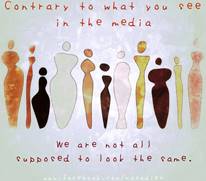Inclusive or Exclusive: Body Positive Communication in Imagery and Clothing in Athens, Greece
DOI:
https://doi.org/10.31542/j.ecj.1265Abstract
It is expected that 40% of adults in Greece will be obese by 2030, and more and more individuals in the country are inactive. There are many reasons for obesity and inactivity; however, factors such as societal influences and appearance-focused communication are known to have an effect. Negative body communication—in other words, size-discrimination or shaming—may cause a person to consume unhealthy or large amounts of food and avoid exercise. Likewise, a system of social marking divides one group, the “ideal” group, from another group, the “lesser” group, thereby creating a perception of abnormality towards the “lesser” group and strengthening a social divide. Moreover, labelling theory states that individuals tend to behave based on the label assigned to them. In contrast, body positive communication seeks to challenge beauty standards and encourage a healthy mindset that in turn inspires healthy consumption and activity. This study analyzes communication towards females in Athens, Greece, through imagery, by examining front-of-store signage and mannequins, and clothing, by reviewing the size range available for purchase in stores. Major findings reveal that images do not show diversified sizing and the most common sizes are medium and small. This paper shows that negative communication could potentially exacerbate the overweight and obesity rate and that Athens, Greece has inadequate body positive communication practices.


